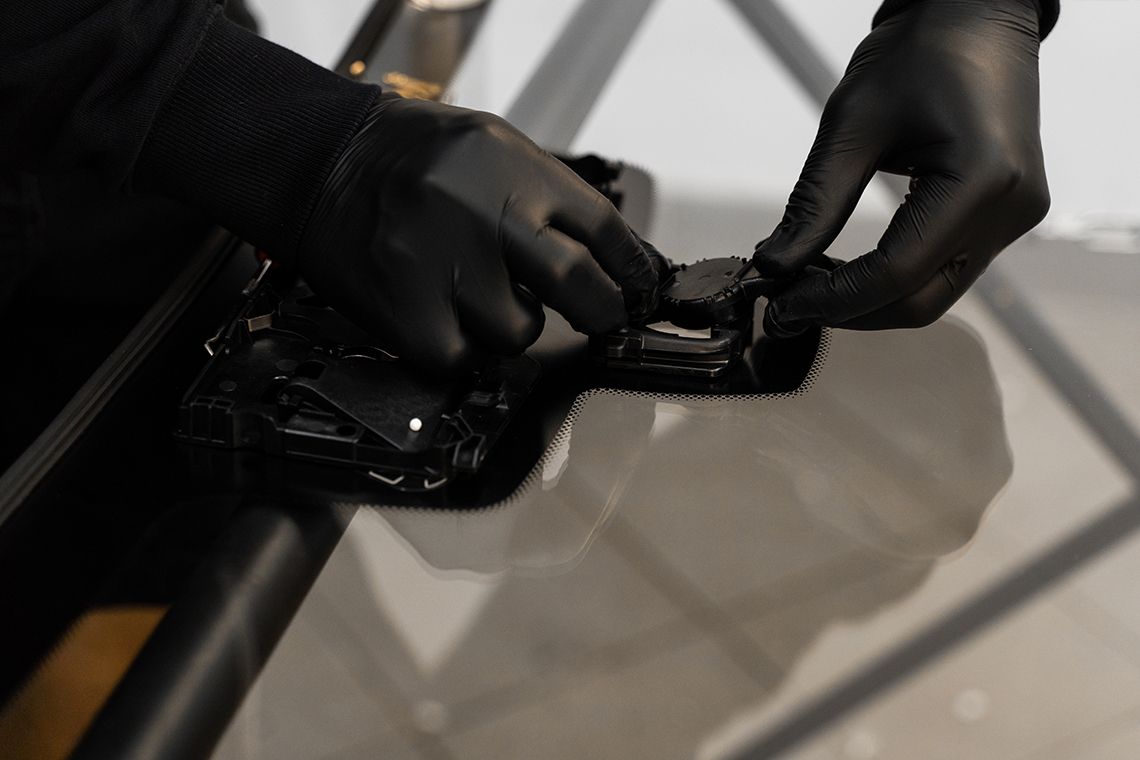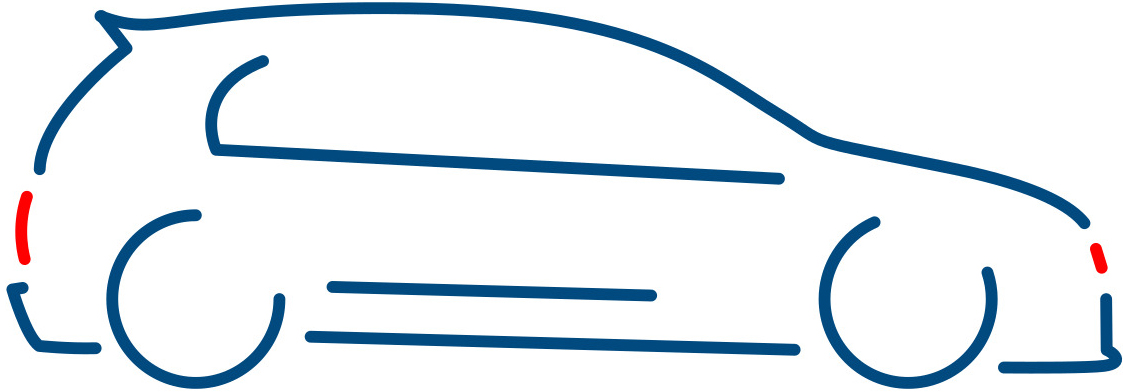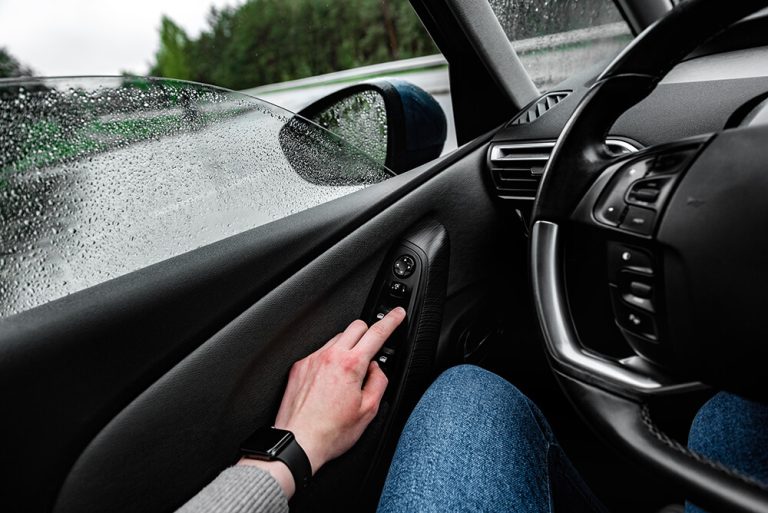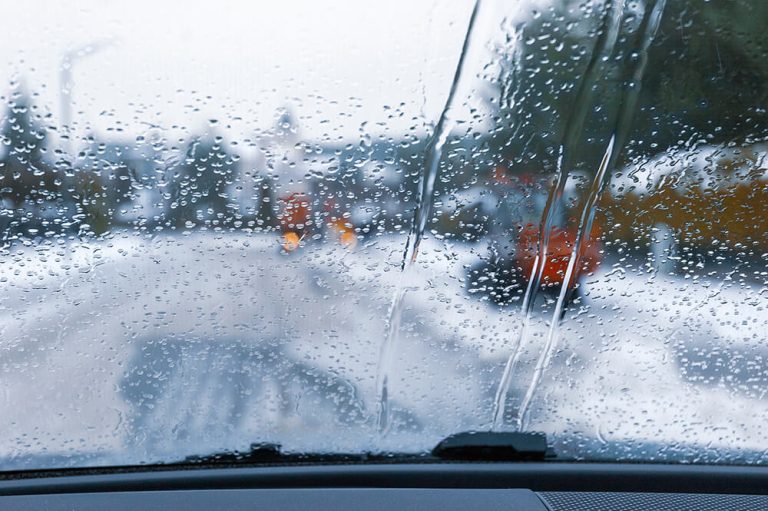For most modern vehicles, a windshield replacement involves more than just installing a new piece of glass. It also requires precise calibration of the Advanced Driver Assistance Systems (ADAS) to ensure safety features continue to function as intended.

ADAS systems are proven to help reduce the risk of accidents caused by human error, which remains the primary cause of vehicular crashes. Research suggests that widespread use of these systems could prevent up to 40% of crashes, reduce injuries by 37%, and lower fatalities by nearly 30% in everyday passenger vehicles.1
In this blog, we’ll take you inside the windshield calibration process so you understand exactly why it’s needed, how long it takes, and what could go wrong if it’s skipped.
What Is Windshield Recalibration?
For drivers in Whitby, understanding what is recalibration of windshield can help explain why it is a necessary part of windshield replacement. Windshield recalibration is the process of precisely realigning the cameras and sensors built into your vehicle’s windshield so that your Advanced Driver Assistance Systems (ADAS) work exactly as intended. These sensors control important safety features such as:
- Adaptive Cruise Control (ACC): Maintains a safe following distance by automatically adjusting your speed in response to traffic conditions.
- Forward Collision Warning (FCW): Alerts you to potential frontal impacts so you can react in time to prevent or lessen a collision.
- Automatic Emergency Braking (AEB): Engages the brakes automatically if the system detects an imminent crash and you do not respond quickly enough.
- Lane Departure Warning (LDW) and Lane Keeping Assist (LKA): Monitors lane markings and warns you if the vehicle drifts, while some systems gently steer you back into your lane.
- Traffic Sign Recognition (TSR): Reads road signs and displays the information on your dashboard or heads-up display, helping you stay informed of speed limits and other critical signage.
Do I Need To Recalibrate After Windshield Replacement?

Recalibration after windshield replacement is not optional. Modern vehicles rely on ADAS cameras and sensors that must be perfectly aligned to work correctly. Even a small shift in placement can cause these systems to misinterpret road conditions or fail to respond when needed.
Manufacturers mandate recalibration after every windshield replacement to keep the vehicle in line with its original safety standards. Failing to complete this step can reduce the accuracy of your ADAS and, in some cases, void the manufacturer’s warranty.
How Long Does It Take To Calibrate A Windshield? Inside the Windshield Calibration Process
Calibrating a windshield typically takes anywhere from 30 minutes to two hours. The exact duration depends on the type of calibration your vehicle needs and the manufacturer’s requirements. There are two primary methods:
- Static Calibration (In-Shop): This method is done inside the workshop, where technicians use carefully positioned targets and manufacturer-approved tools to reset the alignment of your vehicle’s ADAS cameras and sensors. Because everything is performed in a controlled environment, the process is efficient and usually takes about 30 to 60 minutes.
- Dynamic Calibration (On-Road): This approach involves taking the vehicle out on the road so the ADAS can recalibrate while driving. The technician follows specific speed, distance, and road condition requirements set by the manufacturer. Depending on traffic and weather, dynamic calibration generally takes 45 to 90 minutes to complete.
A complete windshield calibration follows several important steps:
- Vehicle Preparation: Before starting, the technician checks the tire pressure, verifies that the windshield is properly installed, and makes sure the battery has enough charge to complete the procedure without interruption.
- Specialized Equipment Setup: Manufacturer-approved calibration tools are positioned in front of the vehicle at exact distances and angles to match factory specifications.
- Target Positioning: Visual targets or patterns are aligned so the ADAS cameras can recalibrate their field of view and restore accurate readings.
- On-Road Testing (if required): For vehicles that require dynamic calibration, the technician drives under specific speed and road conditions, allowing the system to adjust using real-world data.
- Final Verification: A full diagnostic scan confirms that all ADAS features, including lane departure warnings, collision alerts, and adaptive cruise control, are functioning as intended.
The Risks of Skipping ADAS Calibration

Ignoring ADAS calibration after a windshield replacement can put your safety at risk by compromising the performance of key safety systems. A difference of just a few millimetres in sensor placement can alter how your vehicle interprets road markings, distances, and obstacles.
A misaligned system changes how your vehicle interprets its surroundings, which can alter the timing and accuracy of its responses. Alerts may come too late to give you enough reaction time, automated braking might not slow the car quickly enough, and lane assistance could drift just far enough to put you at risk without you realizing it.
In addition to safety concerns, skipping recalibration can invalidate your manufacturer’s warranty and give insurers grounds to reject claims if the system is suspected of contributing to an accident.
Does Insurance Cover Windshield Calibration in Ontario?
In Ontario, windshield calibration is typically covered under comprehensive auto insurance when it is needed as part of a windshield replacement. This is because calibration restores safety systems to the specifications set by the manufacturer. However, coverage details and deductibles differ between insurance providers, so it is important to confirm the specifics of your policy before scheduling a windshield replacement.
It’s also important to note that most insurance companies will require an invoice or service report showing the calibration was performed by a qualified shop using OEM-approved procedures. If calibration is skipped or the work is not properly documented, you may encounter difficulties with future insurance claims, particularly if an accident is tied to an ADAS malfunction.
What to Check After Windshield Replacement
After a windshield replacement, it is important to verify that both the glass installation and your vehicle’s safety systems are functioning correctly. Even when the work is done by experienced technicians, a quick check can give you confidence that your ADAS features are operating as intended. Here’s a short and helpful post-service checklist:
- Confirm that all ADAS warning lights are off: Before driving away from the shop, check the dashboard to ensure no safety-related lights remain lit.
- Test lane-keeping assist to ensure it is active and responsive: On a clearly marked road, lightly take your hands off the steering wheel for a moment to verify that the system keeps you centred in the lane.
- Check the dashboard for any new or unusual alerts: Look for warning messages or icons that were not present before the windshield replacement, as they may indicate a calibration or sensor issue.
- Take a short, smooth test drive: Drive through a variety of conditions, such as straight roads and gentle curves, to confirm the vehicle reacts predictably and all safety systems operate without hesitation.
H2: Why Whitby Drivers Trust Auto Glass Whitby for Calibration
From accurate lane tracking to timely collision warnings, your ADAS systems play a critical role in ensuring your safety. Failing to recalibrate after a windshield replacement can compromise these features, which not only affects their precision but can also increase the likelihood of delayed responses in critical situations.
Auto Glass Whitby delivers expert windshield replacements and precise ADAS calibrations tailored to meet manufacturer standards. Our certified team uses advanced equipment and follows exact specifications for every make and model. Fill out our online form today and get a free quote for your service.
Resources:AAA Foundation for Traffic Safety. Potential Reduction in Crashes, Injuries, and Deaths from Large-Scale Deployment of Advanced Driver Assistance Systems. AAA Foundation for Traffic Safety, Sept. 2018, https://aaafoundation.org/potential-reduction-in-crashes-injuries-and-deaths-from-large-scale-deployment-of-advanced-driver-assistance-systems/.


